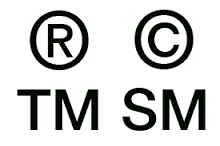Today the term ‘trade mark’ is commonly used and widely understood. While consumers may not know the legal background of a trade mark, it’s generally understood that the product, symbol or name belongs to a company or business.
Modern trade mark law in the UK has been established for a long time, but how much do you know about its history and development?
Historically significant
Traders, shops and merchants have instinctively used unique symbols and markings for their wares for centuries. From barber shop poles to product symbols, the idea of having unique marks for different products has long been established.
However, it’s only during the last 200 years that guidance, and eventually legal directions, have been created and implemented.
Key trade mark legislation
To bring us to where we are today concerning the legality of trade marks, how products are registered and how patents work, there have been a number of legislative changes.
The first Act of Parliament that was enforced regarding trade marks was the Merchandise Marks Act 1862. This specifically made it a criminal offence for anyone to copy another’s merchant mark in order to make money. Finally, merchants could be sure that their personal mark wouldn’t be used by someone else to sell goods and services.
Formal register for trade marks
Soon after, in 1875, the Trade Marks Registration Act launched a formal system of registration for trade marks at the UK Patent Office. Registration began on 1 January 1876 with the Bass Brewery registering its distinctive red triangle – a trade mark that is still in use today.
The 1875 Registration Act also defined a trade mark for the first time, ensuring that there could be no legal misunderstanding of the term. It laid a trade mark out as “a device, or mark, or name of an individual or firm printed in some particular and distinctive manner; or a written signature or copy of a written signature of an individual or firm; or a distinctive label or ticket.”
In a nod to the unofficial trade marks that were already in existence before this Act was passed, any word or name that had been effectively used as a mark before August 1875 could be registered, even if it did not fulfil the criteria.
Reducing costs
In 1883, another Act was brought into law – the Patents and Trade Marks Act 1883. This reducing the cost of registering a trade mark and further expanded the scope of the definition. The law now allowed “fancy words not in common use” to be formally registered.
This Act effectively revised and rejuvenated trade mark law and introduced ‘brands’ as new trade marks for the first time in law.
Further Acts of amendment
Further major Acts surrounding trade marks were passed in 1888 and 1905. Both of these altered and refined the definition and understanding of a trade mark. In 1919, legislation was introduced to separate the trade mark register into two parts, each of which had different criteria for registration.
The final law to be passed before the current Act of 1994 was in 1938. This remained in force for decades until the introduction of the trade mark law that we use today.
Trade Marks Act 1994
On 31 October 1994, the Trade Marks Act 1994 was formally passed. It was formulated to implement the EU Trade Mark Directive 89/104 into UK law.
The level of detail within the 1994 Act has meant that there have been no further changes to trade mark law since then. The law governs trade marks in the UK and on the Isle of Man, although it doesn’t cover the Channel Islands, which have their own trade mark registers.
The current law describes a trade mark as a name, word, symbol, logo, design image, shape, sound, phrase or signature, or any combination of these elements.

